Córdoba is one of my favourite cities in Spain.
With flower-filled patios and a labyrinth of twisting alleyways that reveal surprises around every corner, the Old Town is bewitching. But it is the UNESCO-listed Mezquita of Córdoba that pulls the crowds.
It is an easy day trip from Seville, Málaga or even Madrid, and an essential part of an Andalusia itinerary. But what should you see if you only have a day in Córdoba?
As a two-time visitor, this is where I can help you. To make the most of your time there, follow my tried and tested itinerary that will allow you to explore the best things to do in Córdoba in one day.
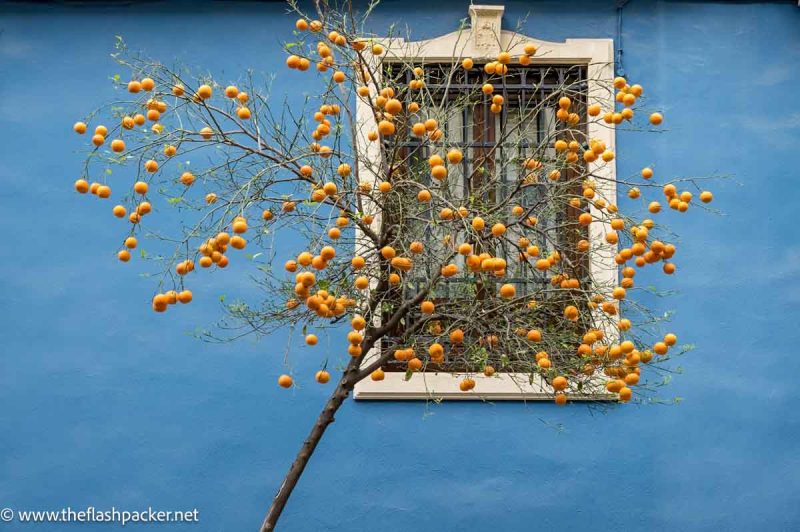
Some articles on this website contain affiliate links. This means that I may earn a small commission if you make a purchase through these links. As an Amazon Associate, I earn from qualifying purchases. Read the full disclosure here.
Is One Day Enough for Córdoba?
This is a small city and its main sights are located within a compact, and walkable, area. With an early start, one day in Córdoba is just about enough to visit its main attractions and get a feel for its rich history
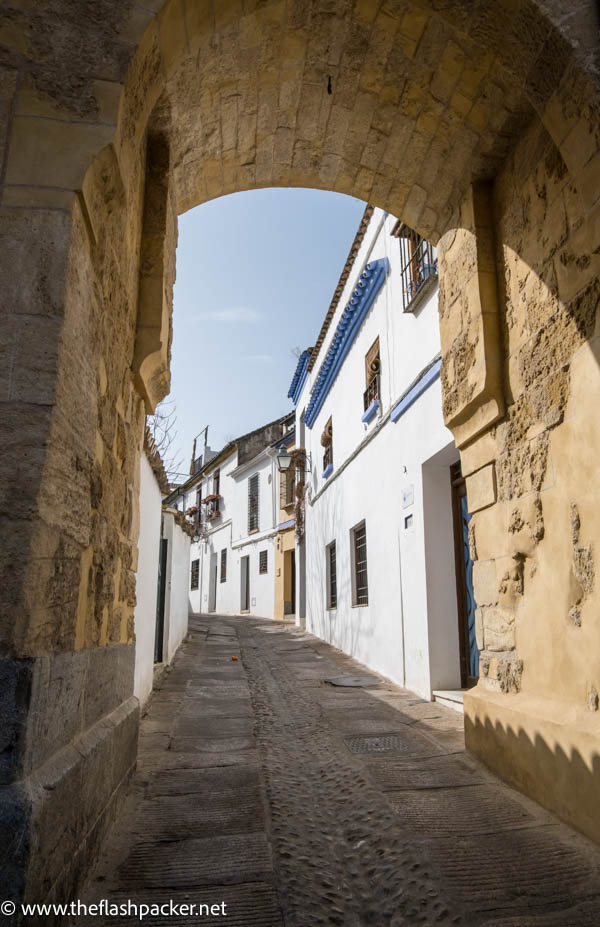
Suggested 1-Day Córdoba Itinerary
This itinerary will allow you to cover the best things to do in Córdoba in 24 hours. It is jam-packed with wonderful things to see so wear your most comfortable shoes.
Your sightseeing will be concentrated around the historic centre of Córdoba, or Old Town. Listed as a UNESCO World Heritage Site for its outstanding examples of religious architecture, this includes the Jewish Quarter.
Start your day in Córdoba bright and early at Flower Alley to appreciate it before the crowds descend. This will also give you a fighting chance of capturing that classic Córdoba image of the bell tower of the Mezquita (Mosque-Cathedral), free of fellow visitors thrusting their phone cameras in the air.
Walk over to the Mezquita of Córdoba as its doors open for the morning. This is the city’s most popular attraction and it’s a smart move to visit before the tour groups arrive.
After climbing the bell tower for magnificent views of Córdoba, explore the Jewish Quarter before breaking for lunch.
Your afternoon in Córdoba is devoted to the Alcázar and the city’s flower-filled patios. If you have enough time and energy, cross the Roman bridge to the Calahorra Tower and stop by the Roman temple.
To help you get the lay of the land and to navigate the city, here’s a map of the places included in this Córdoba itinerary.
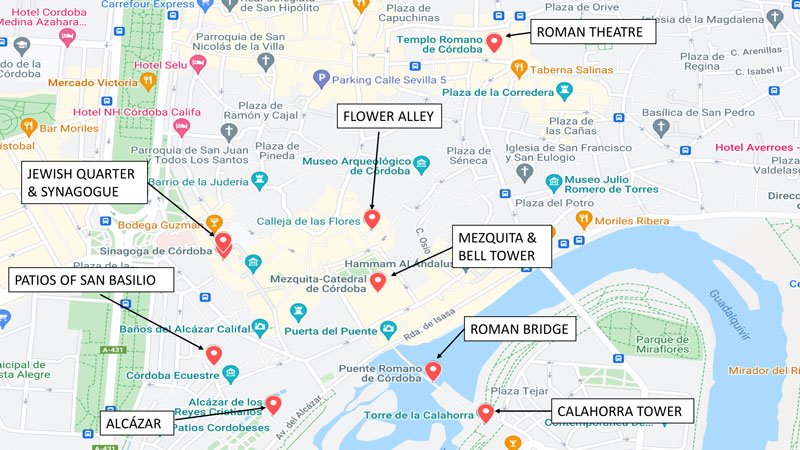
If you find it easier, you can use this as a self-guided walking tour of Córdoba. Simply click on the image for a live map.
If you are short on time or would like to benefit from the knowledge of a local guide, why not join an organised tour? For solo travellers, this can also be a great way to meet fellow travellers.
This 4-hour tour has fabulous reviews and includes many of the sights included in this Cordoba itinerary, including the Mezquita and Alcázar.
Best Things to Do in Córdoba in One Day
1. WALK DOWN FLOWER ALLEY (CALLEJA DE LAS FLORES)
Beat the crowds to Calleja de las Flores, the most popular street in Córdoba.
This narrow alleyway is lined with whitewashed buildings that are studded with flowerpots bursting with geraniums. It opens out to a small square, from where there is an iconic view of the bell tower of the Mosque-Cathedral.
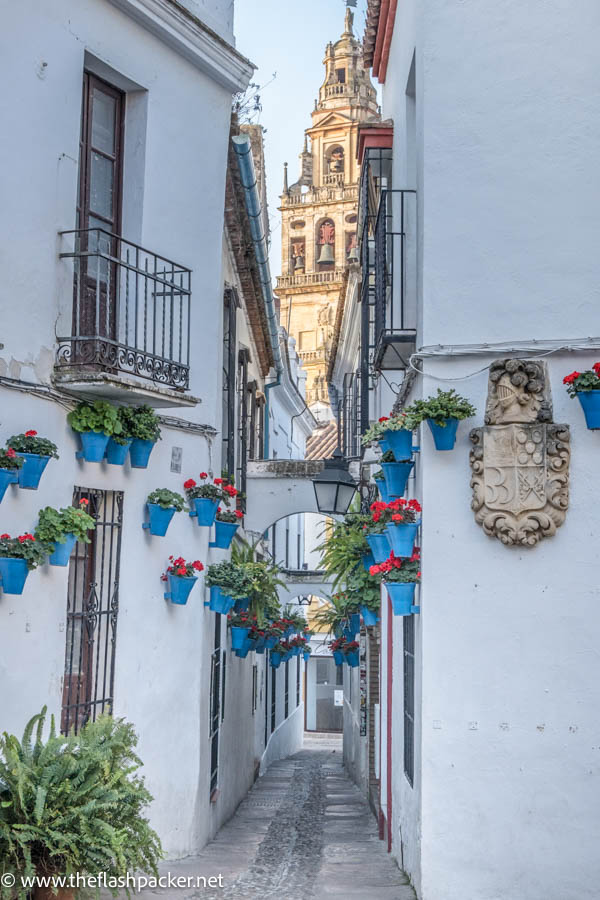
2. EXPLORE THE MAGNIFICENT MEZQUITA OF CÓRDOBA
The Mezquita is the beating heart of Córdoba.
Founded by Abd al Rahman in 785 and built on the site of a former Visigothic church, Córdoba’s Great Mosque embodied the power of Islam on the Iberian Peninsula. Subsequent Caliphs placed their architectural stamps on the mosque until the city’s reconquest by the Catholic monarchs.
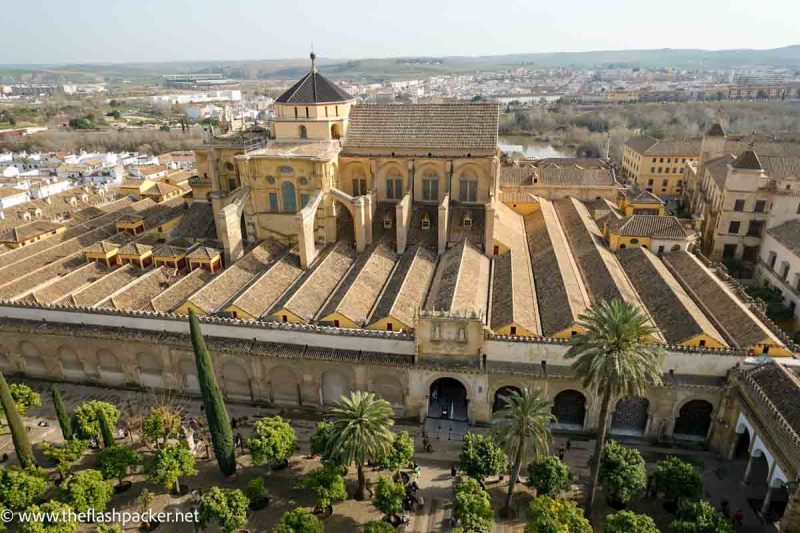
The Mezquita was reconsecrated as a place of Christian worship, dedicated to the Virgin Mary, but it wasn’t until the 16th Century that a Baroque cathedral was built at the heart of the old mosque.
The sense of history at Córdoba’s Mezquita is palpable. Its hulking walls aren’t much to look at from the outside but as your eyes adjust to its dimly lit interior, its sublime beauty slaps you around the face.
As you enter through the Puerta de las Palmas (Door of the Palms), a forest of over 850 columns of marble, jasper, granite and onyx greet you. On top of these pillars are the recycled capitals from the original Visigothic church, which are crowned by red-and-white striped arches.
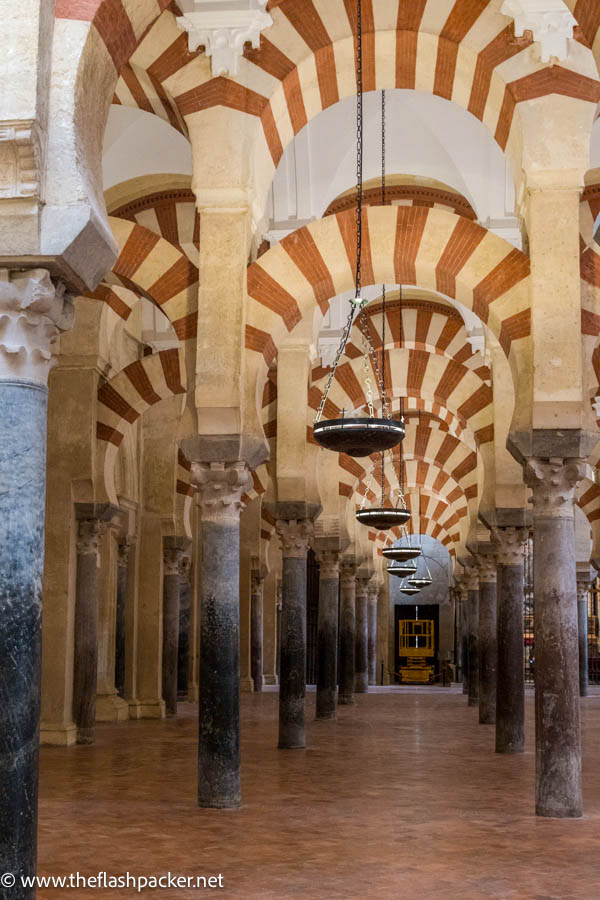
Although you can scan a QR code for a map of the Mezquita, there are no information boards. To make the most of your visit, come armed with a decent guidebook or buy an audioguide at the kiosk in the Patio de los Naranjos.
Better still, book a guided tour of the Mezquita.
>>> CLICK HERE TO BOOK A GUIDED TOUR + TICKET
Highlights of the Mezquita of Córdoba
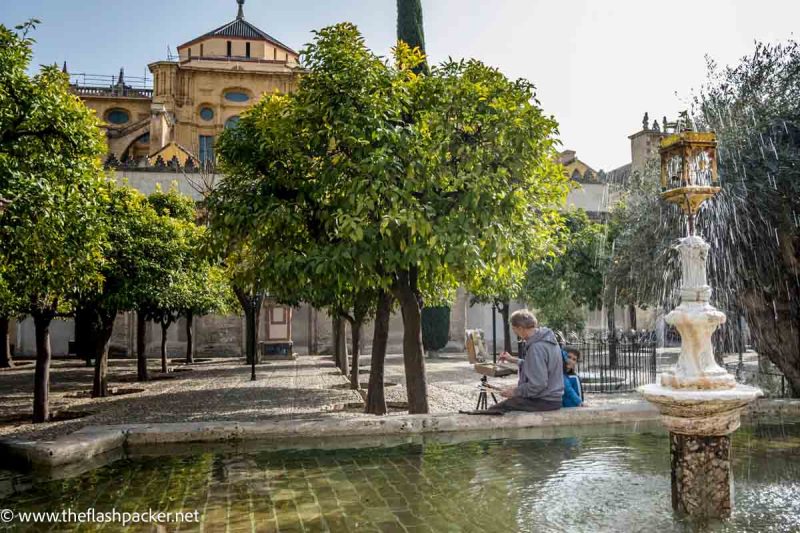
PATIO DE LOS NARANJOS
Formerly the site of ritual ablutions before prayer in the mosque, this lovely courtyard, sprinkled with orange, palm and cypress trees and fountains, forms the entrance to the Mezquita.
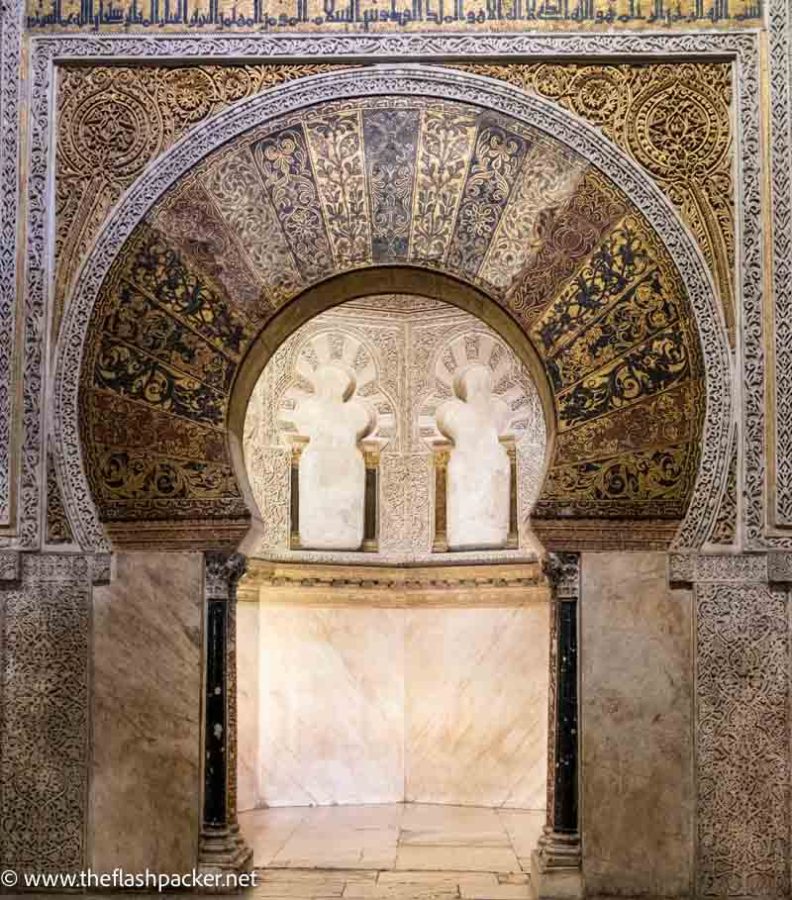
MIHRAB
Built by Al Hakam II (961 – 76), and decorated with exquisite mosaics, the mihrab (prayer niche) is the Mezquita’s most glittering jewel.
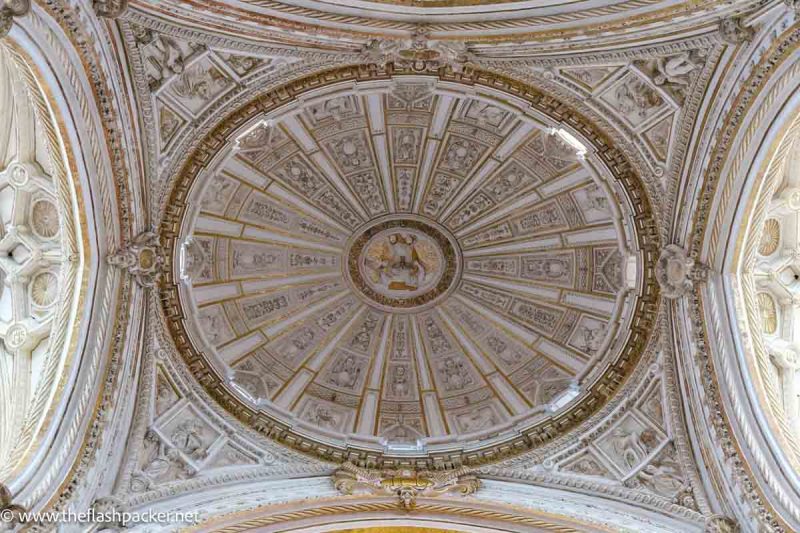
CATHEDRAL TRANSEPT
Crane your neck upwards to take in the ornate ceiling of the Cathedral’s transept
Address: C Cardenal Herrero, 1
Opening hours: Open daily from 10 am until 7 pm. Check opening hours here.
Ticket price: Entrance fee applies
3. CLIMB TORRE DEL ALMINAR (BELL TOWER)
I came close to sacrificing the bell tower to the altar of time. I am so glad that I didn’t.
Rising to a height of 305 feet (93 meters), Torre del Alminar is built on the site of the minaret of the Great Mosque of Córdoba.
You ascend a set of wooden steps to the first level. The second set of steep stone steps brings you to eye level with the bells.
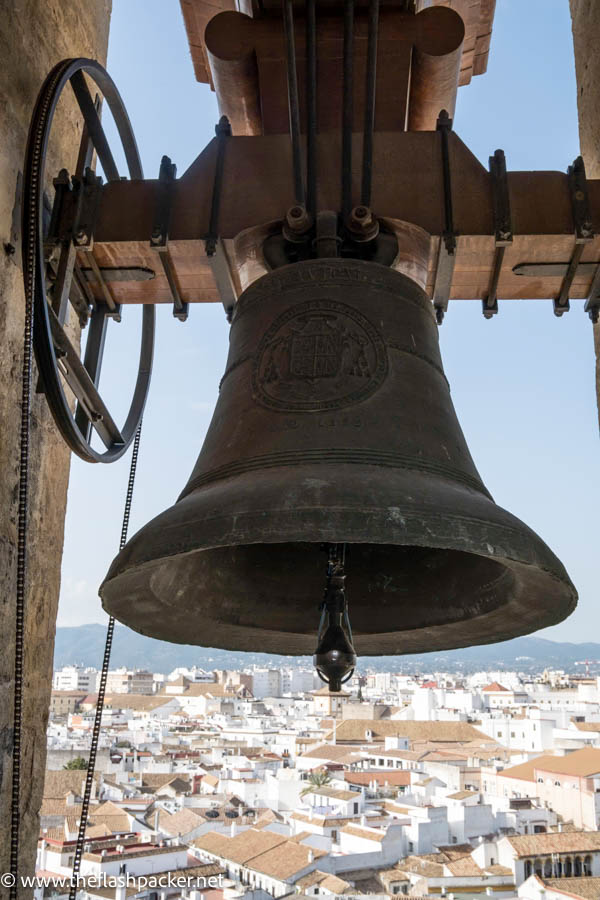
And just when you think it’s all over, a further set of steps takes you to a third level from where there is a bird’s eye view of the Mosque-Cathedral and its surroundings.
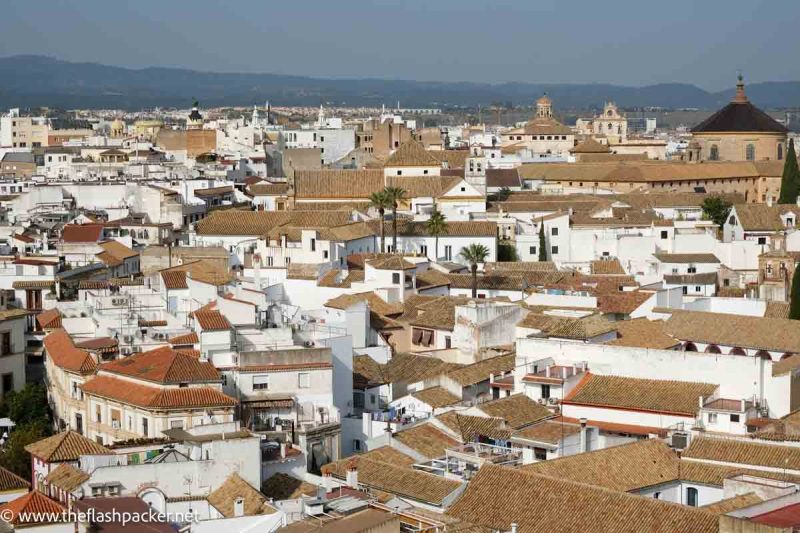
4. WALK AROUND THE JUDERÍA (JEWISH QUARTER)
The Mezquita is located in the city’s Judería (Jewish Quarter). Walking through this maze of narrow cobblestone streets gives you a snapshot of what Córdoba would have been like in its glory days.
The Judería was home to a vibrant Jewish community from the 10th Century. Five centuries of religious tolerance came to an abrupt end in 1492, when Isabella and Ferdinand signed a decree to expel the Jewish population.
As the Jewish Quarter is well and truly on the tourist map, expect it to be busy. Sadly, it is also blighted by tacky souvenir shops
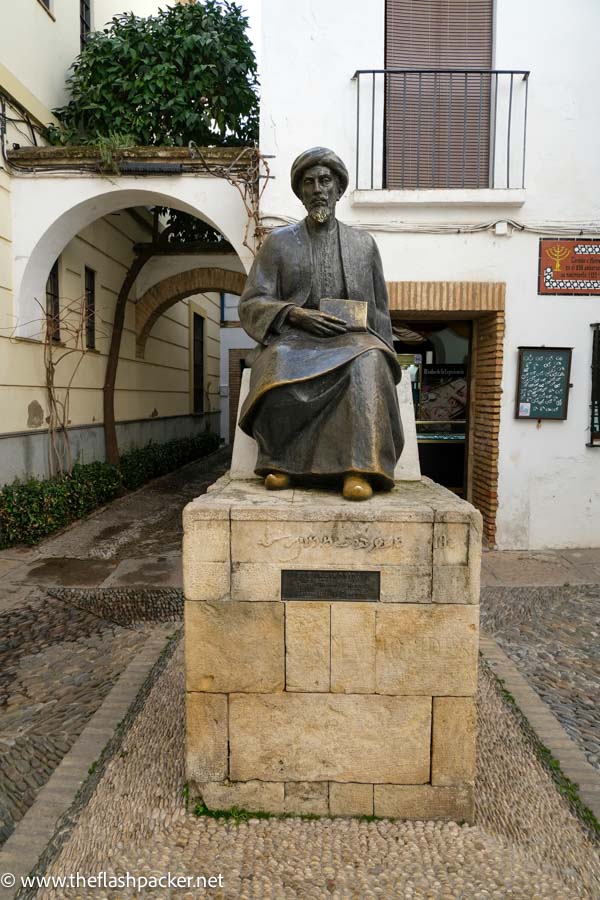
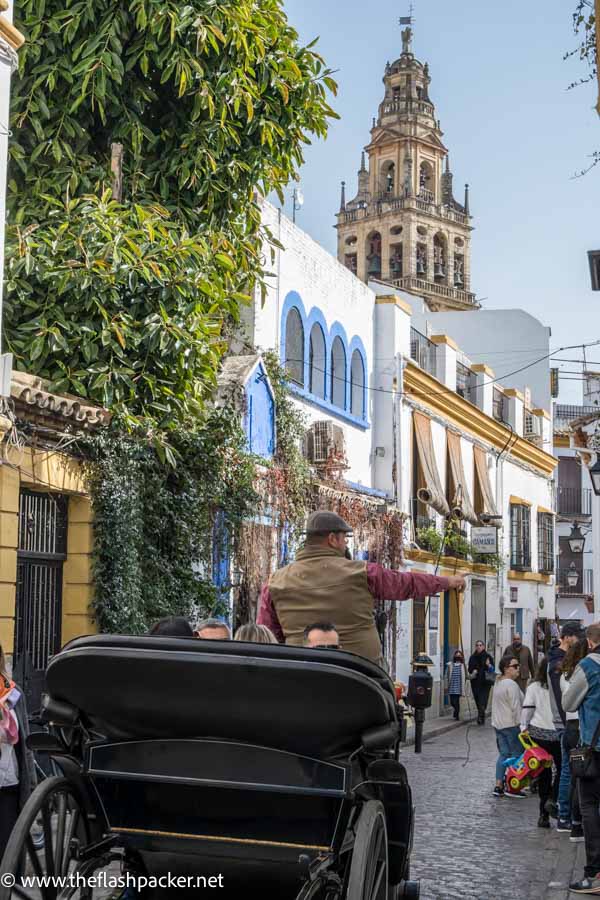
5. VISIT SINAGOGA DE CÓRDOBA (CÓRDOBA SYNAGOGUE)
Built in 1315, this is the only remaining synagogue in Andalusia and only one of three in Spain that survived the Jewish expulsion (the other two are in Toledo).
Córdoba Synagogue is a small building but it has intricate stucco work with Hebrew texts and has retained its women’s gallery.
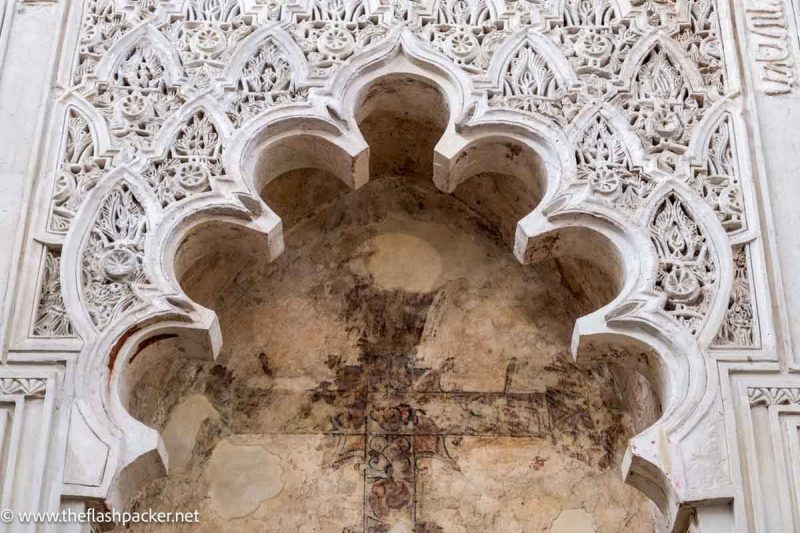
Address: C Judería, 20
Opening hours: Open from Tuesday to Sunday. Check here for seasonal opening times.
Ticket price: Entry is free
6. VISIT THE ALCÁZAR
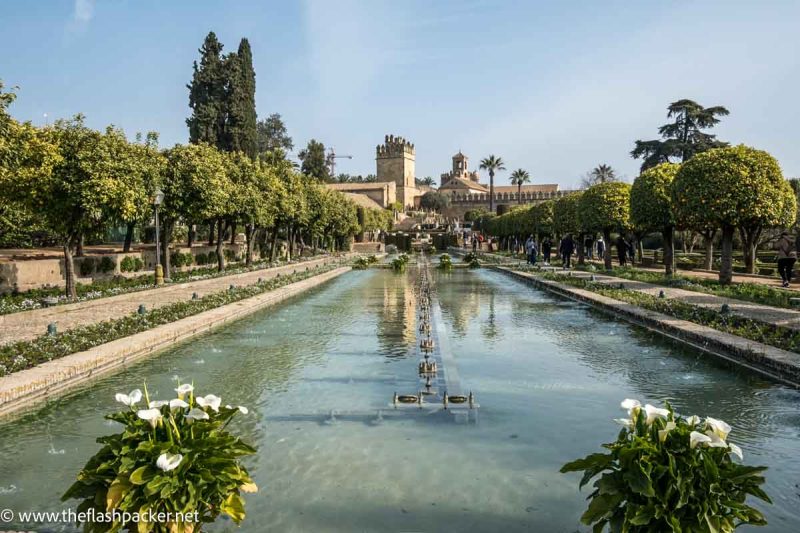
From this 14th-century Mudejar-style palace the Catholic Monarchs held court and launched their conquest of Granada. After the reconquest, the Alcázar de Los Reyes Cristianos was used by monarchs when they were visiting Córdoba, hence its name.
Other than some fine Roman mosaics and a stone sarcophagus discovered in the city, there’s not much to detain you inside the palace.
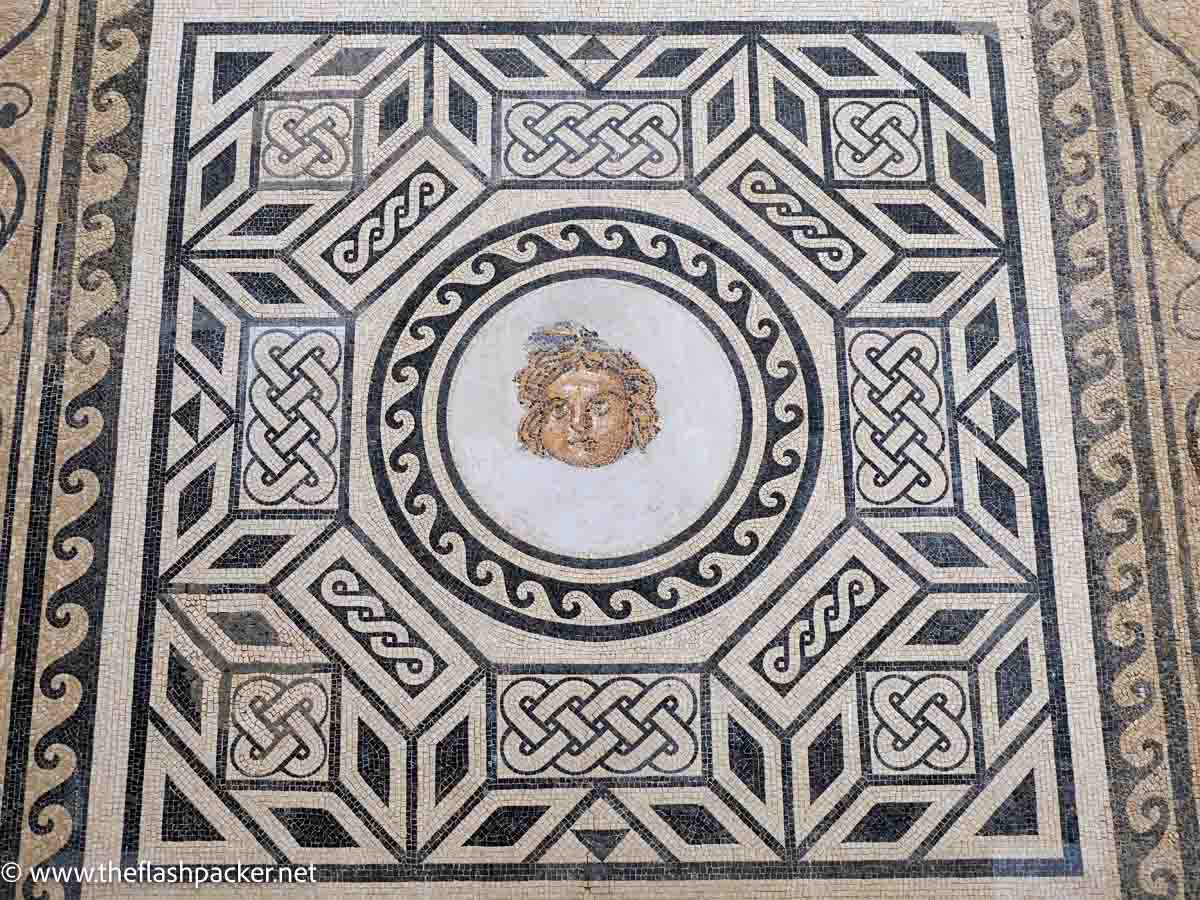
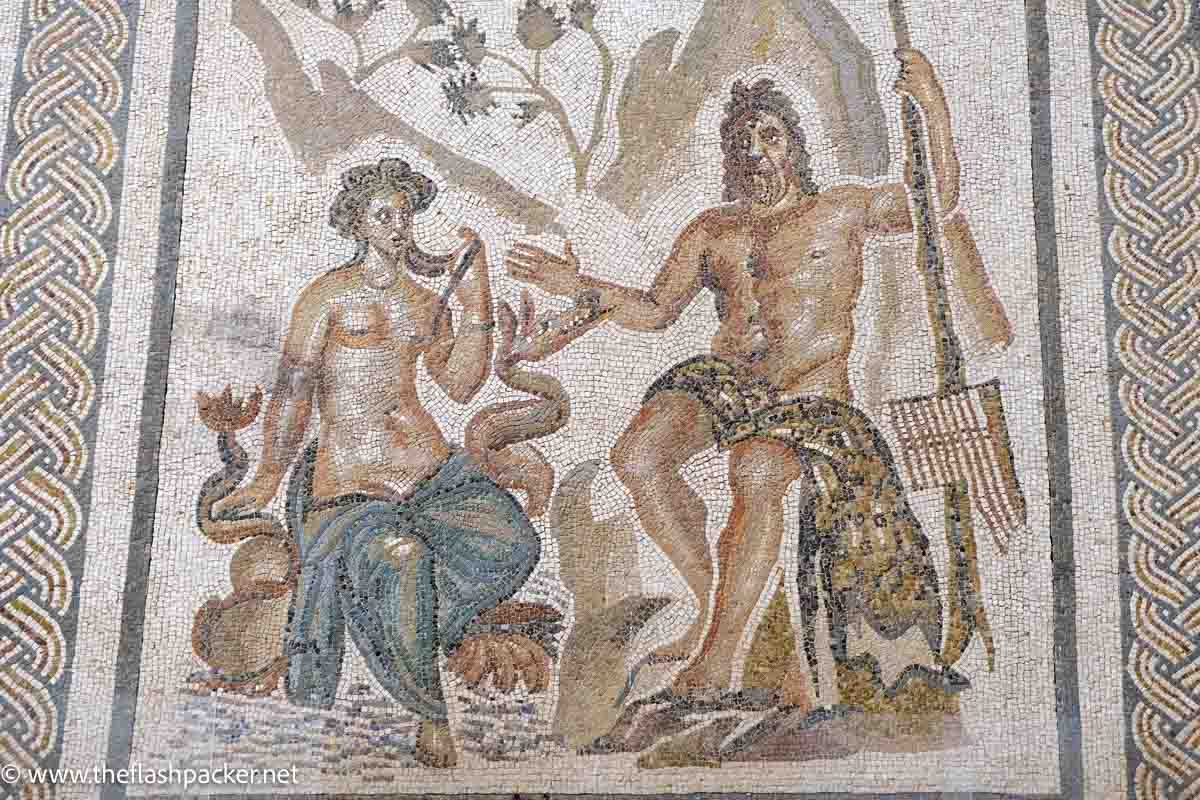
But its gardens with their ponds and fountains, and cypress, citrus and palm trees, are magnificent.
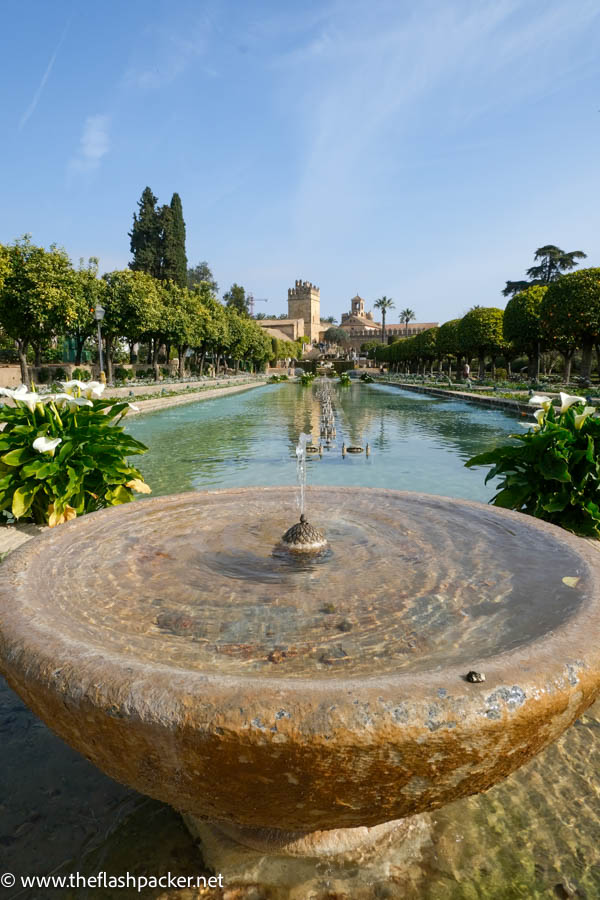
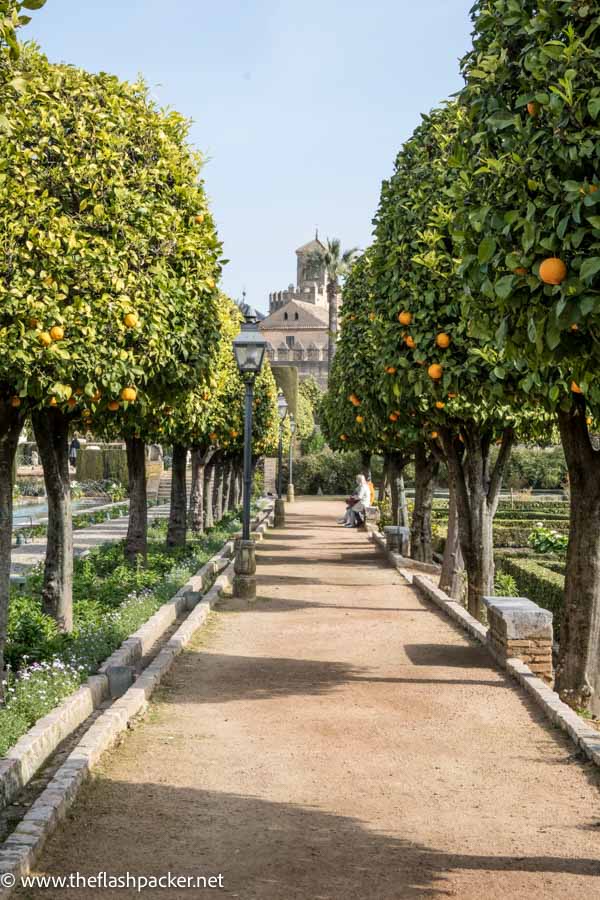
They also feature a statue of Christopher Columbus with King Ferdinand and Queen Isabella before he set sail on his maiden voyage to discover the New World.
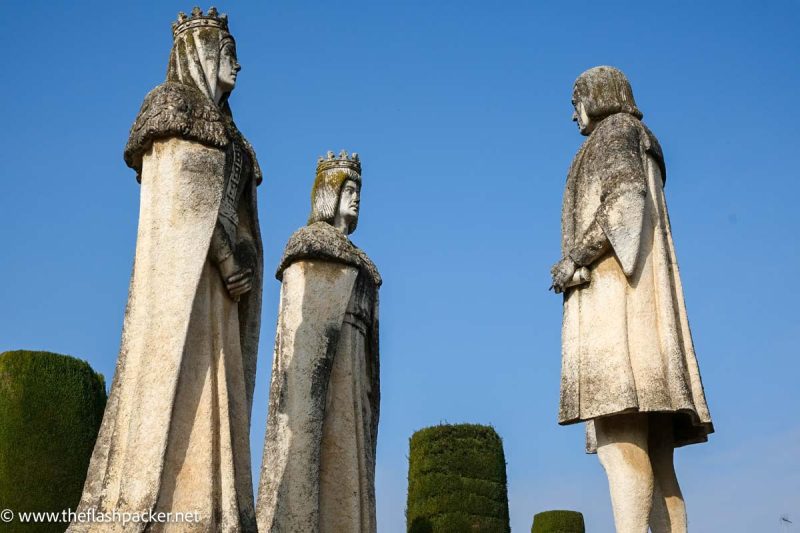
Guided tours of the Alcázar are available.
>>> BOOK YOUR GUIDED TOUR HERE
Address: Pl. Campo Santo de los Mártires
Opening hours: Open from Tuesday to Sunday. Check here for seasonal opening times.
Ticket price: Entrance fee applies
7. EXPLORE THE PATIOS OF CÓRDOBA
Flower-filled patios, many with iron grilles and ceramics, are key to Córdoba’s architectural charm.
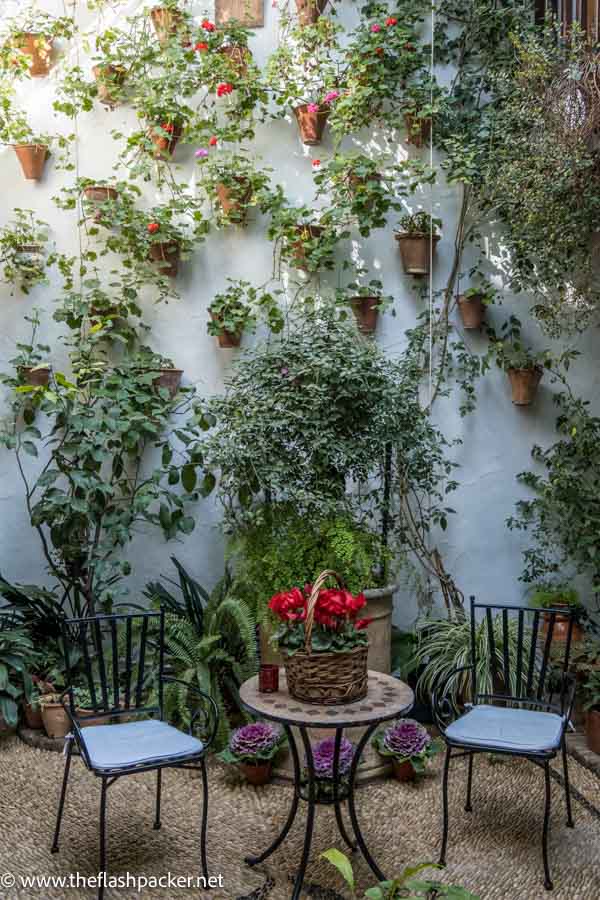
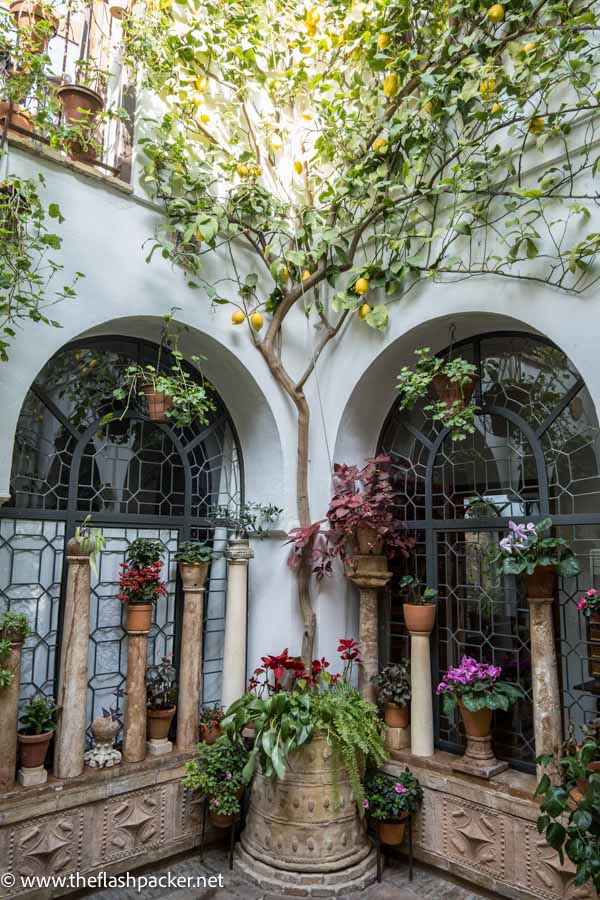
The Fiesta of the Patios in Córdoba is UNESCO-listed. During these two weeks in May, residents decorate their shared patios in the hope of winning a coveted prize in one of the two competitions.
You can visit these patios year-round and Córdoba’s tourist office publishes a list of patios open to visitors. Access to the private courtyards is free although a donation is welcome.
However, I found that just by wandering around San Basilio, it won’t be long before you stumble across a patio or two.
8. TAKE IN THE VIEW FROM PUENTE ROMANO (ROMAN BRIDGE)
One of Córdoba’s best-known landmarks is Puente Romano, a bridge across the Guadalquivir River with Roman foundations that the Moors rebuilt. It not only features 17 graceful stone arches but there are also wonderful views of Córdoba from the opposite side of the river.
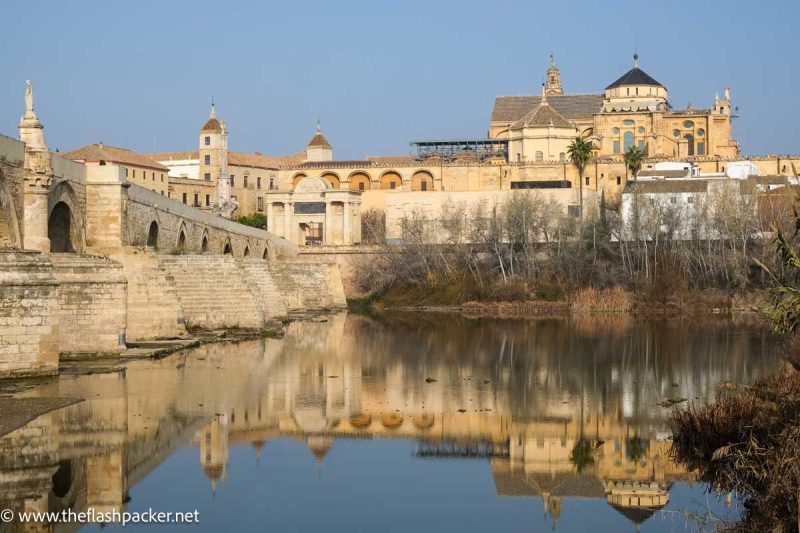
9. POP INTO THE TORRE DE LA CALAHORRA
This 14th-century tower is located at the end of Puente Romano. Built to guard access to the bridge, it is now home to a museum dedicated to the life, culture and philosophy of 10th Century Córdoba.
The museum is open daily and an entrance fee applies.
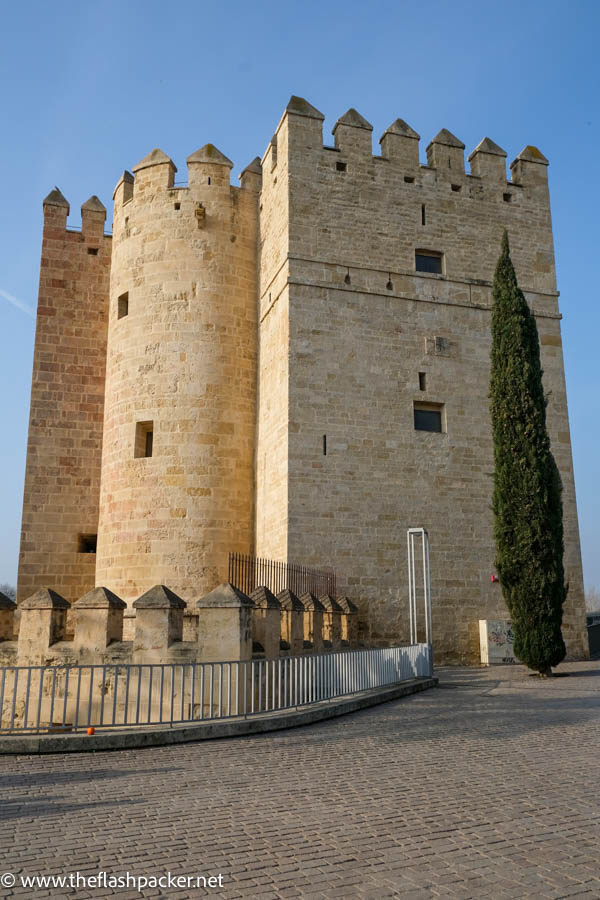
10. STOP BY THE ROMAN TEMPLE
The final stop on our 1-day Córdoba itinerary also harks back to the city’s Roman heritage.
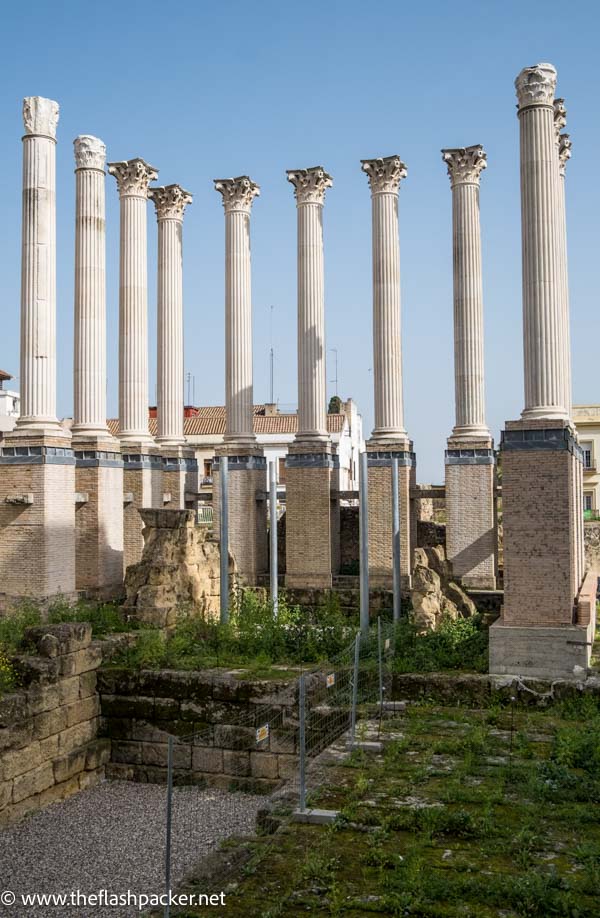
Thought to have been built around the same time as the Roman Bridge in the 1st or 2nd Century, this Roman temple was dedicated to the imperial cult and formed part of the Provincial Forum. All that remains are 12 reconstructed Corinthian columns, which suggest that the temple would have been immense.
Address: C Capitulares, 1
When to Visit Córdoba
The best time to visit Córdoba is during the spring or autumn months.
Between May and June, Córdoba bursts in bloom and enjoys balmy temperatures. Visit in the first two weeks of May and you’ll catch Los Patios de Córdoba (The Patios of Córdoba) festival.
From late September to the beginning of November, you can expect mild and dry days and fewer crowds.
That said, my second visit to Córdoba was in February. Although the nights were chilly, the days were bright and warm.
Avoid visiting in the summer months when the mercury can hit the 90s. I made that mistake once. I won’t make it again.
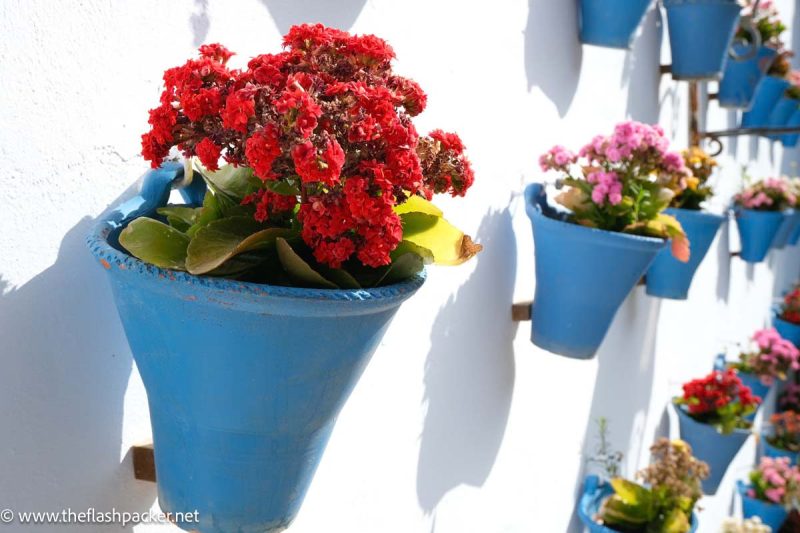
Getting There
Getting to Córdoba by train
Thanks to Spain’s AVE high-speed trains, arriving in Córdoba by rail is super easy. Book in advance for the best fares.
Córdoba train station is located 2km northwest of the city centre.
Frequent trains run from Seville (45 minutes), Madrid (1 hour 45 minutes) and Málaga (1 hour), and less frequently from Barcelona (4 hours 45 minutes) and Valencia (4 hours 20 minutes). Book in advance for the best fares.
The cheapest way of booking train tickets in Spain is through Renfe, the national rail operator. If the Renfe website doesn’t play nicely with you – on more than one occasion it refused to recognise major destinations for me – book via Omio. Whilst there’s a small booking fee attached, it’s a clear booking engine and hassle-free.
Getting to Córdoba by bus
Spain’s long-distance buses serve Córdoba’s large, modern bus station, which is located opposite the train station.
Alsa bus company operates services to Málaga ( 2 hours 30- minutes), Granada (2 hours 40 minutes) and Seville (1 hour 45 minutes). Socibus operates a service to Madrid (4 hours 50 minutes).
Getting Around
If you stick with this Córdoba itinerary, you shouldn’t need to use public transport. The city centre is not large and all of its main attractions are reachable on foot.
Taxis and city buses are available if you are staying out of the city centre or if you don’t fancy the walk to the bus or train station.
There is also the inevitable hop-on-hop-off (HOHO) bus service.
>>> BUY YOUR HOHO TICKET HERE
Where to Stay in Córdoba
Although you can visit Córdoba as a day trip from Seville, Málaga or even Madrid, I recommend booking a hotel for at least one night. That way, you can make the most of your day in Córdoba and enjoy its relaxed vibe in the evening when the day-trippers have departed.
Here are my recommendations:
Mid-range hotel – Eurostars Azahar
I stayed in this convenient and friendly 4-star hotel that is located close to the Roman Theatre and a ten-minute walk from the Mezquita.
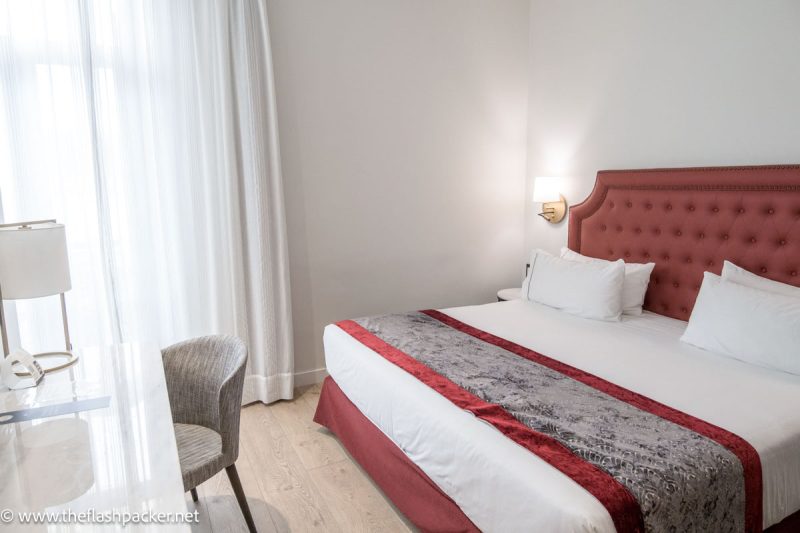
Address: C García Lovera, 1
Splurge – Las Casas de la Judería de Córdoba
This charming hotel, housed in 17th and 18th Century houses is a stone’s throw from the Mezquita and has garnered great reviews. It also has a swimming pool.
Address: Tomás Conde, 10-12
>>> CLICK HERE FOR PHOTOS AND CURRENT PRICES
Budget – Apartamentos Córdoba Atrium
Another old town accommodation option, this apartment also offers a courtyard and rooftop terrace at an excellent price.
Address: Cardenal González, 9
>>> CLICK HERE FOR PHOTOS AND CURRENT PRICES
Where to Eat in Córdoba
Córdoba is not short of bars and restaurants. Here are a few places that I tried and liked.
Breakfast – La Uva Taberna
Set yourself up for the day with a café con leche and tostada at this friendly café tucked at the side of the Mezquita. Cheap and tasty with tables on the terrace.
Address: C Judería, 1
Dinner – Taberna Górgora
This buzzy bar is just about as traditional as it gets. The hunting paraphernalia gracing its walls leaves you with no doubt that this is not a vegan restaurant.
Address: C Conde de Torres Cabrera, 4
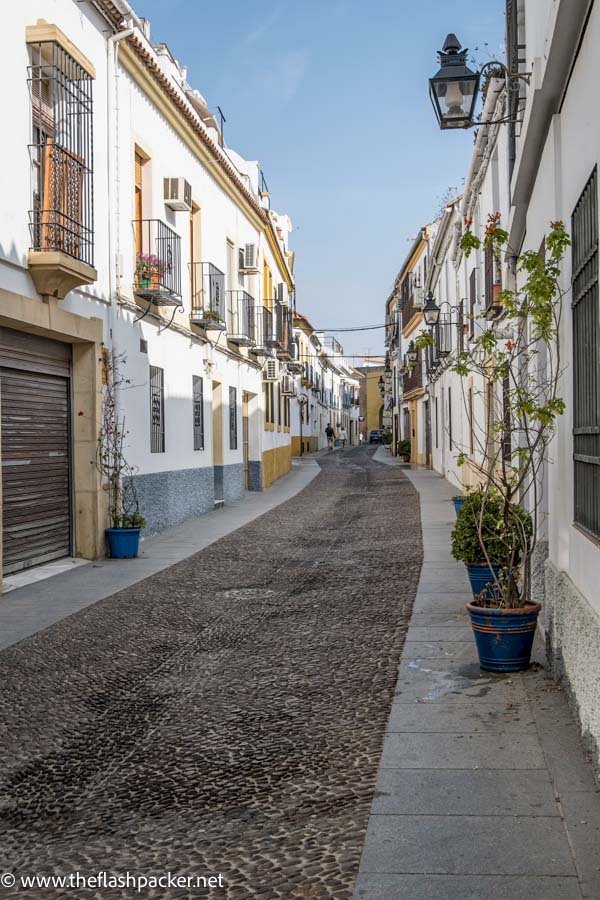
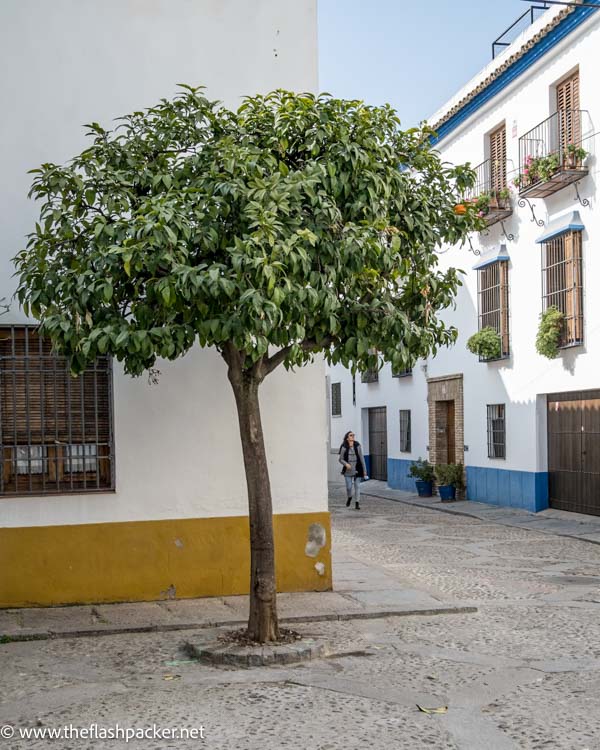
Is Córdoba Safe for Solo Travellers?
Spain is not only one of the best places to travel alone in Europe, but it is also one of the easiest solo travel destinations in the world. This applies even if you are a first-time solo traveller.
As a whole, Spain has a rich history, a vibrant cultural scene and an excellent travel infrastructure.
The priority for female solo travellers is keeping safe when travelling alone. Córdoba is a relatively small city and its tourist area felt relaxed with locals and visitors enjoying its attractions, bars and restaurants. Even after dark, it felt safe.
That said, a little bit of common sense goes a long way. Although Córdoba is a relatively safe city, it is a city nonetheless. Remain vigilant, keep your belongings close to you and use your hotel safe to store valuables.
Which is Better? Córdoba or Granada?
Córdoba or Granada? This is a tricky choice.
Both cities are brimming with history and culture and have world-famous UNESCO-listed attractions.
The Alhambra Palace in Granada is unmissable but deserves at least half a day of your time. Córdoba’s Mezquita is equally unmissable but will not demand as much time.
If you are faced with this choice, do as I did on my first visit to Andalusia. Visit Córdoba as a day trip from Seville and stay for a few days in Granada.
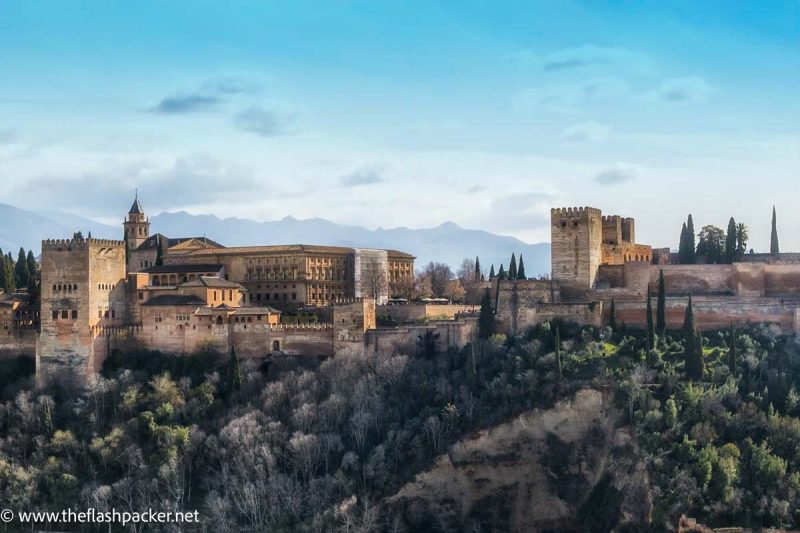
Ready to Spend a Day in Cordoba?
From its flower-filled patios to its monumental Mezquita, Córdoba is 100% worth visiting. Whilst it may not have the same profile as Granada or Seville, it is one of Spain’s most historic and fascinating cities.
Are you visiting other places in Southern Spain? Before you leave, why not check out some of my other guides:
- A Perfect 2 Days in Granada: Itinerary for First-Timers
- 15 Essential Tips for Visiting the Alhambra, Granada
- One Day in Seville: A Perfect Itinerary for First-Timers
- A Perfect 3 Days in Seville: Itinerary & Tips
- A Perfect Weekend in Málaga, Spain: 2-Day Itinerary & Best Things to Do
- One Day in Málaga: A Free Self-Guided Walking Tour

About Bridget
Bridget Coleman has been a passionate traveller for more than 30 years. She has visited 70+ countries, most as a solo traveller.
Articles on this site reflect her first-hand experiences.
To get in touch, email her at hello@theflashpacker.net or follow her on social media.
